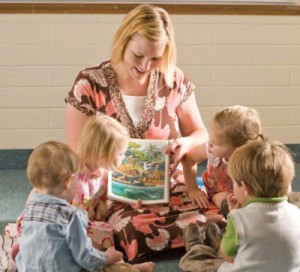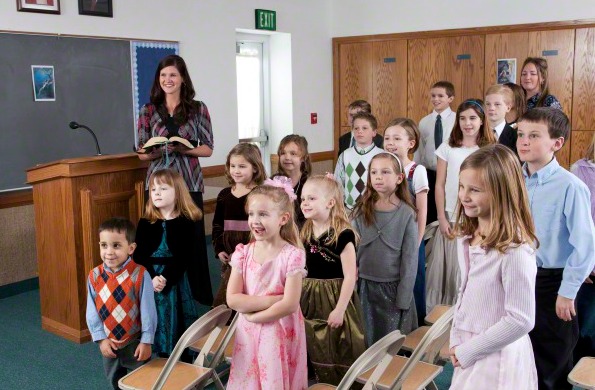I once substituted in the class I had taught a few years before. When I got the children seated, one of them looked around anxiously and asked, “Sister Bittner, where is your rule chart? We need to do the rules.” After so long and several teachers, they still remembered my rule chart. The chart had a picture of a girl in a long dress, drawn by my daughter. I pointed to several areas of her body and asked questions which the children answered.
 “What do your eyes do in Primary?”
“What do your eyes do in Primary?”
“Look at the teacher.”
“What do your ears do in Primary?”
“They listen to the teacher.”
“What does your mouth do in Primary?”
“It says nice words in a quiet voice.”
“What do your hands do in Primary?”
“They sit in your lap and they raise when you want to talk and they don’t touch anything on the teacher’s table.”
“What do your feet do in Primary?”
“They walk quietly, and they sit quietly.”
The children loved to do this simple routine and they learned the answers in only a few weeks. Sometimes a class would come up with an odd answer that would stay in the routine all that year. One group always said that feet don’t kick neighbors.
A class that included two hearing impaired children added that hands don’t sign when the teacher is signing. One class, for reasons I never figured out, always chanted that mouths don’t sing when it isn’t singing time. It didn’t really matter. The important thing was that the children learned the rules of behavior.
One advantage to a very simple chart like this is that you can add things as they become necessary due to behavior patterns adopted by your class. When children are doing something wrong, you can simply point to the offending body part on the picture without ever saying a word. The picture hanging on the wall can be a constant reminder.

In addition, I usually hung up the picture in the packets of the young boy standing with his arms folded. His name is Todd. (I know this because a four-year-old told me it was obvious that his name was Todd.) Not only does Todd remind my classes to behave, but he also was the subject of most of the stories I told in class. He became quite an interesting person by the time the year ended as I added details to suit the story.
Senior Primary children are too old for this. When I subbed, I put their chart on the back of the junior Primary chart. For this one, I tried to have only a few rules. Too many were too confusing. Five seems to be a good number. Just choose five broad rules that cover anything that matters to you. For example, mine often include:
1. Only one person speaks at a time. This is the teacher unless she chooses someone else.
2. Only kind and reverent words may be spoken.
3. Only kind and reverent actions may be taken.
4. If it doesn’t invite the spirit, it isn’t welcome in class.
5. The teacher is in charge.

To read more of Terrie’s articles, click the picture.
These rules are often more suitable for older children and for children who are fairly well trained. With the younger senior Primary children, you may need written rules similar to those for younger children. My daughter changed her rule chart periodically because she says her nine-year-olds stop paying attention to it after about six weeks.
Rule charts make clear your expectation for your students and allow you to focus more on teaching and less on discipline.
About Terrie Lynn Bittner
The late Terrie Lynn Bittner—beloved wife, mother, grandmother, and friend—was the author of two homeschooling books and numerous articles, including several that appeared in Latter-day Saint magazines. She became a member of the Church at the age of 17 and began sharing her faith online in 1992.





I super love this!
Thank you.